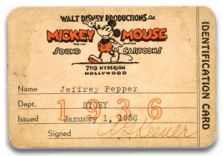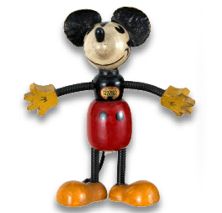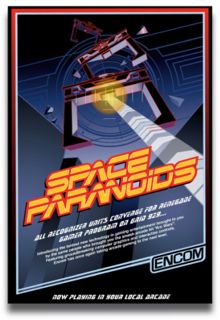Walt Disney began his career as a filmmaker in January of 1920 when he took a job making animated advertisements for the Kansas City Film Ad Company. It was the beginning of a journey that would take a struggling young artist and entrepreneur and eventually mold him into one of the most celebrated icons of 20th century popular culture. The historical map of that journey is an extraordinary one.
Welcome to Studio Geo. These are the places where Walt Disney created his moving pictures:
The Walt Disney Studios - Burbank, California
The success of Mickey Mouse was certainly the primary financial force behind the growth and expansion of the Hyperion Avenue studios. In much the same way, Disney's sprawling and meticulously designed Burbank complex was a house initially built by Snow White and the Seven Dwarfs. Greatly expanded and dramatically modified over the past seven decades, it remains the home of the Walt Disney Company.
Walt wasted no time putting his Snow White profits to work. In August, 1938 he purchased 51 acres of land adjacent to Buena Vista Street in Burbank. Construction on the new studio began almost immediately thereafter and the new facilities were for the most part complete and being occupied by early 1940.
The Walt Disney Company's official history notes that, "Walt was personally involved with all aspects of designing the studio. From the layout of the buildings to design of the animators' chairs, nothing was left to chance. His main concern was to produce a self-sufficient, state-of-the-art production factory that provided all the essential facilities for the entire production process." The new studio, designed primarily by architect Kem Weber, was a graceful swan to the Hyperion studio's ugly duckling. But despite its attractive, campus-like setting and its sleek, streamline modern designs, many members of Disney staff, from artists to service workers, found the aesthetics of their new workplace cold, somewhat sterile and often overwhelming. Over time though, most adapted, probably due in part to numerous employee-friendly amenities that included recreational facilities, a popular commissary and even a full service gas station.
Although the Burbank facilities were designed specifically for producing animation, large soundstages were systematically added to the lot to accommodate gradual increases in live action productions. Stage One was built in 1940 as part of the original design and was used initially to film the live-action orchestra sequences for Fantasia. Stage Two was added in 1949 in an arrangement with actor/producer Jack Webb who filmed his Dragnet television series there for a number of years. That stage later became home to the original Mickey Mouse Club in 1955. Stage Three, complete with a water tank, was built in 1954 specifically for the filming of 20,000 Leagues Under the Sea. Stage Four was added in 1958 and first used for the film Darby O'Gill and the Little People.
Back-lot streets and sets began to emerge in the mid-1950s, at first to accommodate television productions such as Zorro, Elfego Baca and Texas John Slaughter, and then live action feature films that had become the lion's share of the company's output. The back-lot was comprised of four primary groups of exterior sets and facades: a western town, a traditional town square, a residential street, and the Zorro pueblo that was later converted into a French village. The back-lot was eventually phased out over time and replaced with an office building, a parking structure and two additional soundstages.
Far more so than the Hyperion studios, the Burbank studios became much more recognizable to the general public. Walt first showcased the studio in the 1941 feature The Reluctant Dragon, where comedian Robert Benchley bumbled through much of the lot in what amounted to a lighthearted documentary on the making of Disney cartoons. Later, the studio and its environs were frequent backdrops for the Disneyland, Wonderful World of Color and Wonderful World of Disney television programs.
The Walt Disney Company has dramatically expanded in recent decades into an international entertainment conglomerate, and so has the Burbank complex correspondingly enlarged and grown. Following extensive company restructuring in the mid-1980s, then CEO Michael Eisner commissioned architect Michael Graves to create the Team Disney building, an imposing structure that now dominates the studio lot, with its outsized Seven Dwarfs sculptures paying subtle homage to the film that financed Disney's move to Burbank. At roughly the same time, Walt Disney Feature Animation was ironically exiled to a warehouse in Glendale. The department returned to Burbank in 1995 in a new and larger building, replete with a giant Mickey Sorcerer's Hat, directly across the street from the main studio complex.
A street sign that still marks the corner of Mickey Avenue and Dopey Drive has become a company icon of sorts, although its attached pointers to studio departments such as LAYOUT, MULTIPLANE, INK & PAINT and IN BTWEEN have long lost their relevance as directional cues and now serve more as historical markers.
Explore the 2719 Hyperion Archives:































































